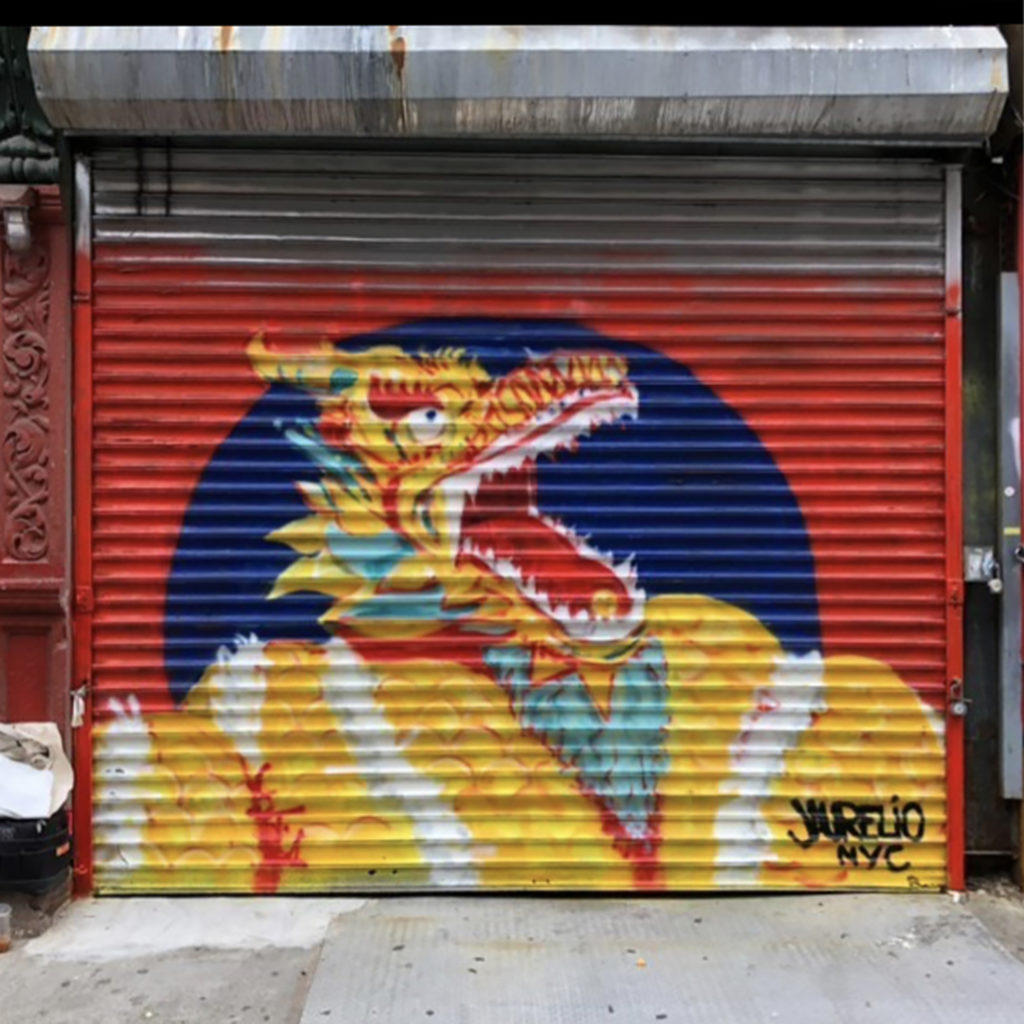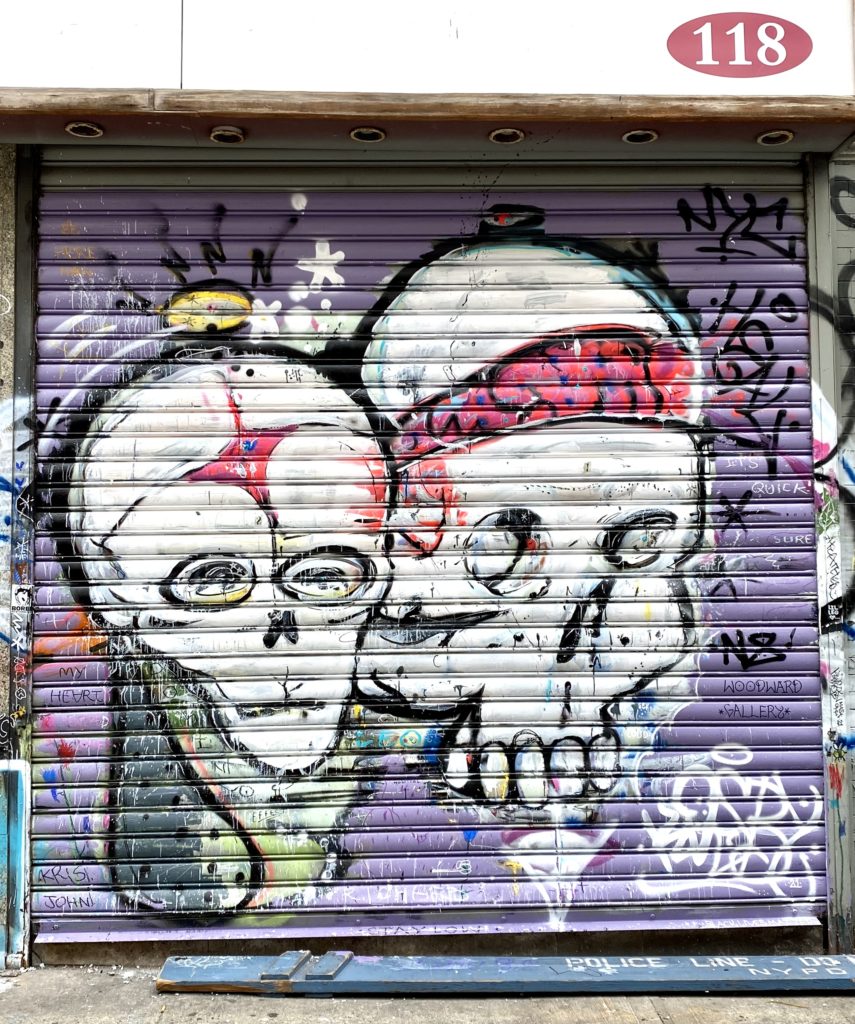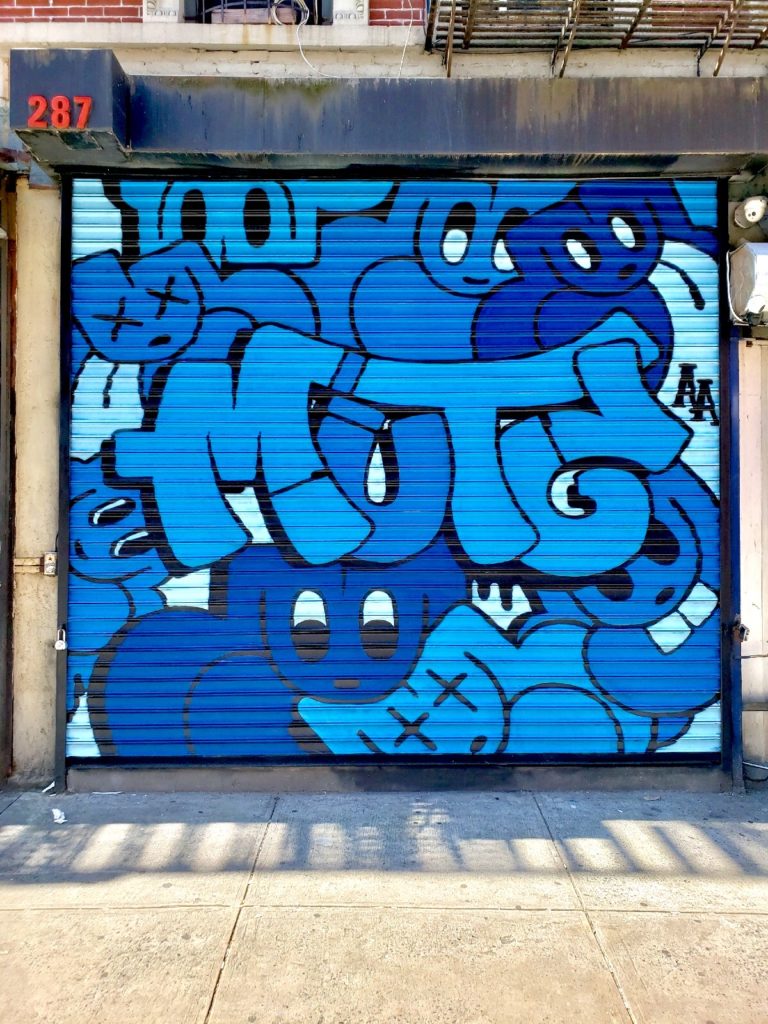Woodward Gallery—Gates Mural Project
Eldridge and Broome Streets, NYC
Woodward Gallery has maintained its public art Project Space—devoted to emerging and established street artists and muralists—on Eldridge Street, in New York City, since 2008. Over the years, Woodward Gallery expanded this initiative to additional sites along Broome Street and Eldridge Street. Experienced in local neighborhood improvement efforts to help clean up graffiti and provide cultural opportunities in the Lower East Side neighborhood, Woodward Gallery recently curated a local roll-down Gates Mural Project, supporting these selected artists, participating under their street aliases:
LISSETTE ABARCA @lasak_art
MICHAEL ALAN @michaelalanalien
JOSE AURELIO BAEZ @jaurelionyc
COSBE @cosbe1
RH DOAZ @rhdoaz
JEN LARKIN @jenprops
MOODY MUTZ @mastermoodymutz
DAVID MILLER WEEKS @dmweeks
JM RIZZI @jmrizzi
MATT SIREN @mattsiren

(Photo Credit: Woodward Gallery, NYC)

(Photo Credit: Woodward Gallery, NYC)

(Photo Credit: Woodward Gallery, NYC)

(Photo Credit: Woodward Gallery, NYC)

(Photo Credit: Woodward Gallery, NYC)

(Photo Credit: Woodward Gallery, NYC)

(Photo Credit: Woodward Gallery, NYC)

(Photo Credit: Woodward Gallery, NYC)

(Photo Credit: Woodward Gallery, NYC)

(Photo Credit: Woodward Gallery, NYC)

(Photo Credit: Woodward Gallery, NYC)

(Photo Credit: Woodward Gallery, NYC)

(Photo Credit: Woodward Gallery, NYC)

(Photo Credit: Woodward Gallery, NYC)
Lisette Abarca, alias Lasak, is an Ecuadorian artist born in Guayaquil. She paints from a place of peace and deep connection with the natural world, specifically scuba diving, surrounded by the ocean´s creatures. With the help of a brush and spray cans, she brings to life images of plants and animals. Her work is inspired by blending nature´s forms and colors proposed by her fantastic creativity. Lasak is now helping people to heal their traumas through art therapy using art and visual media as a tool for communication to rebuild emotional and social well-being. With this focus, she is working with the Ministry of Culture of Ecuador and Cancer Control Centers, such as Solca Ecuador.
Artist Michael Alan is equally adept in several mediums. He draws, paints, and creates performance art as a living, breathing canvas. He uses color to push his positive message: art is a feeling that is tangible, audible, visual—an experience to engage in.
Artist Jose Aurelio Baez uses collage to create layers of texture and color that resemble the aged peeling walls of a subway station. Under close inspection, small swatches of color reveal pasted newspaper articles and advertising posters among other recognizable materials. This process of repurposing familiar objects reflects his experience as a self-taught and traditionally trained artist.
Cosbe is an American Neo-Expressionist painter whose automatic original paintings expose a frenetic, honest, and visceral reaction to his surroundings.
RH Doaz is a contemporary painter, illustrator, and muralist. Drawing much inspiration from within the nostalgia of Hungarian textile patterns, the natural world, and hand illustrated books of his youth, Doaz creates paintings which are whimsical yet stoic in imagery and composition. His paintings are characterized by his bold colors and patterned line work. At first glance, his birds and other subject matter often seem friendly, but upon closer inspection they have an underlying seriousness. His characters are a reflection of the aesthetic of imperfection in life that is not often contemplated.
Inspired by NYC’s urban landscape, artist Jen Larkin feels a deep attachment to the color red, the signage of the subways, and the universal messaging of street signs. Today she blends her career as a graphic designer with street art and public-commissioned murals.
Moody started to make his mark in the graffiti world in the late ‘80s by smashing the streets of Brooklyn and the other four boroughs with his iconic imagery and signature “M” tag. Moody developed his technique on NYC’s urban walls, secretly perfecting his style alongside other street artists at a time when there was no legal outdoor space to show off art. Earning respect from other graffiti artists and producing public murals over the years, Moody also refined a successful studio practice where he continues to create work reflecting the popular culture of today.
DM Weeks brings old master knowledge and street-smart confidence to his murals that invoke a fever of survival through depression. He offers light to dark fabled subjects.
Artist James Rizzi, better known as JM Rizzi, has roots in Abstract Expressionism, yet favors a Neo Contemporary flare. JM Rizzi has catapulted his vision of bold curves and lines punched with bright color. He is equally adept painting massive murals as he is in his studio practice. Since writing graffiti during NYC’s thriving rave days, Rizzi’s art has explored the intersection of abstract art and counterculture. His paintings are an animated conversation between positive and negative space facilitated by rhythm.
Matt Siren is an urban, graphic, and contemporary artist. His signature Ghost Girl image is characterized by black hair with bangs and a sweet round face. Ghost Girl made her debut in Matt Siren’s graffiti and street art around 2005. The shapes used for her face are soft and innocent, but also a bit seductive. Matt Siren gave his character dimension by adding a spiritual element with the flower in her hair. The ghost shape stemmed from the artist’s obsession with Ms. Pac-Man. Over time Ghost Girl became synonymous with the artist’s street identity. She evolved as a symbol of female empowerment and multiculturalism. Siren’s intense counter icon is the masculine, skull-faced Transformer Mask.



